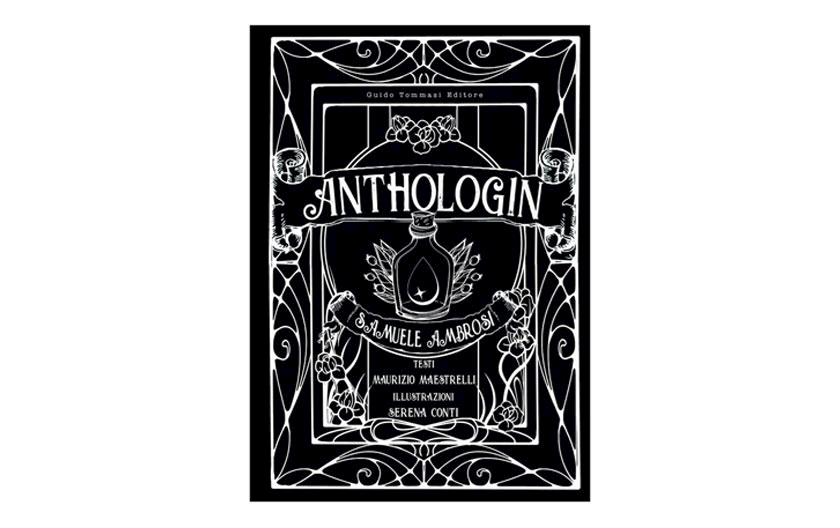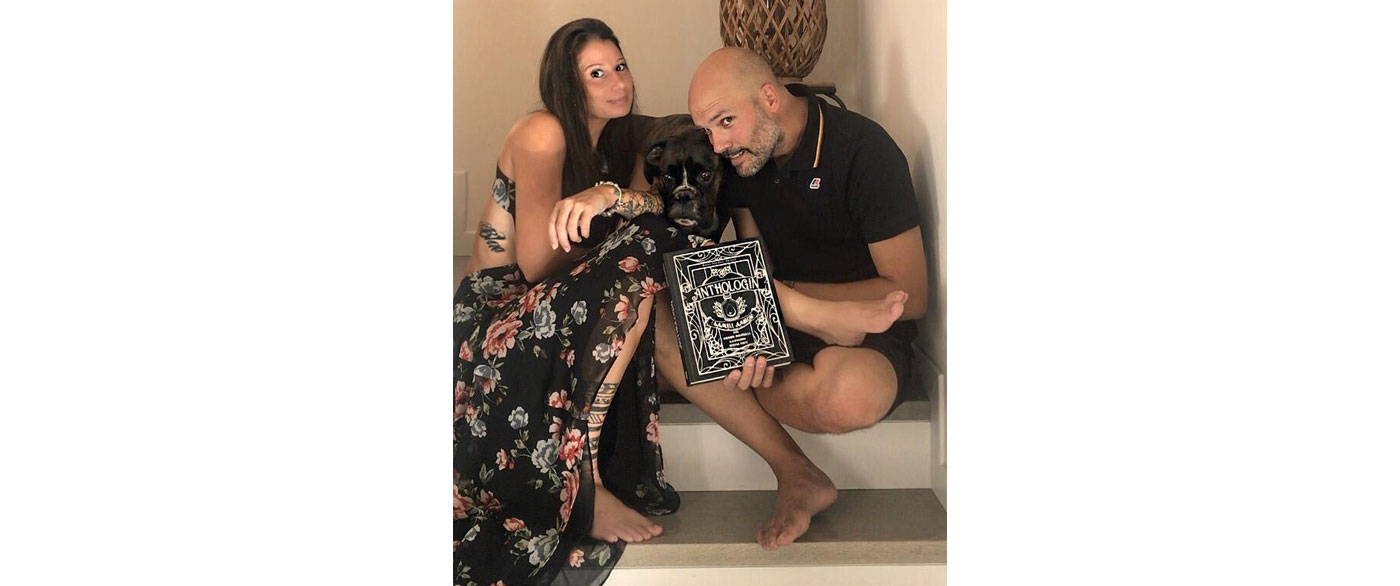Samuele Ambrosi, the king of gin.
Seven-plus years of study to be able to say everything that had not yet been said and clarified about the king of bottles, gin. This distillate has made Samuele Ambrosi, one of the best-known and best-loved bartenders on the national and international scene, fall in love with it, and he allowed us to interview him for RGlife, asking him a few questions about the book that, only a month after its publication, has already become a must-have on the bookshelves of every bartender and mixing enthusiast.
So Samuel, let's start by explaining how the love for gin came about and what you think about its rediscovery in recent years.
It all started by looking for information about what was still an underrated and undervalued distillate. It was many, many years ago, at a time when I found myself disgruntled to find books on whiskey, cognac, liqueurs but nothing on gin. I wondered how it was possible that such a versatile and 'easy' consumable product was not adequately documented. That was the moment when the spark of research was sparked. In Italy there was still nothing, or rather nothing translated, so as a first purchase I chose The Dedalus book of gin by Richard Barnett. Three hundred pages without any figures or photographs, no drawings or labels, completely in English. I set about translating page by page: it took six months to translate it all. I felt literally pummeled, not being a technical book on gin but a historical text written by a doctor, which made me realize the overall vision of how infinite the world of this wonderful distillate could be. Lo and behold, it was at that very moment that I began compulsively "collecting" all kinds of information inherent to gin, accumulating so much that I later decided to make a book summarizing everything I was learning.
I was not in love with a distillate that few people in the world knew about and that was hard to find: my sensitivity to gin was also shared by my customers and therefore collided with my business, I think this was a great support for me.
Today gin is doing unthinkable numbers compared to many years ago. Every day I listen to bartender after bartender brag about its death. I do not have this gift; I can simply make some observations. The first is about the numbers, and I find it natural that after so many years there can be some bends and dips, as is only right and logical. The second, is that there is always a tendency to forget and not to metabolize. This business phenomenon that is gin has literally changed our perception and knowledge in the bar world. The clientele will never again be stationary on the three brands that once monopolized a bottle: now every bar in the world has at least ten different gin labels. I am sure that this trend will persist, no doubt with lower volumes but it should not be forgotten that gin is the distillate that pleases everyone unlike whiskey or tequila and that it is part of the history of the planet, the history of blended drinking, the history of the human being and, last but not least, that it is the prince distillate of the most drunk cocktail in the world. So yes, volumes will drop, but the sum of all these factors will ensure its survival.
Interview with Samuele Ambrosi-second part
How long did it take you to write Anthologin and what do you think differentiates it from the volumes dealing with gin that preceded it?
I am a little ashamed to say this, but it has been a little over seven years since the day I decided to write a book about gin. It is true that I had to interrupt my work for other professional commitments sometimes for long periods of time, but in the meantime the material I was collecting was increasing more and more. The credit for the energy and strength to give a final turn to this pachydermic work goes to my partner and illustrator of the book, Serena Conti, who succeeded through her talent in illustrations to make me find the last piece that I was missing to complete our work.
This book is very different from the myriad of texts that are on the market nowadays, many of which - in my opinion - are absolutely excellent works, but I believe that ANTHOLOGIN is a true guide to the world of gin, where every single aspect of this precious distillate has been addressed and developed in the most thorough manner possible. Moreover, I find the volume, from an aesthetic point of view, to be a unique work of its kind. I believe that the key element of the book is that each illustration is a work that communicates and interacts between the reader and the topic in which it is placed, creating a unique emotional bridge.
How did your professional background influence the volume and why did the book come at this time in your life?
My professional background simply mirrors my career. I am insatiable, I am never satisfied, and I want to, indeed must, prove to myself that I can do it. The real problem is that I demand a lot from what I am and do, and this leads me to be very strict in every choice. I also see this aspect in the way I study and therefore in my education. I always try to delve into every detail, always ask myself many questions about every aspect, taking the knowledge of that single element to an almost insane level of knowledge!
Making certain decisions is not only a matter of knowledge but also a matter of courage, and probably only at this moment in my history, mentally and physically, did I have the courage and therefore the mental balance that allowed me to close such a challenging work.
What was the reaction to the release of the book? Did you expect this immediate success?
From the decision to realistically finish the book to the day I received the first hard copy in my hand was a full two years so you can imagine how my reaction upon delivery by the courier was one of total ecstasy, I was crying! So much so that I ran to my partner's study so that together we could share the opening of the package. The success and the numbers? I honestly never thought about it, I'm honest. I wanted and expected that anyone who invested their money to buy our work would be satisfied, fulfilled and, perhaps dreamily, amazed. My goal was to exceed his expectations, period. The thing that makes me the happiest is all the messages from colleagues, even those I do not know directly, who write to me in their various social profiles declaring themselves happy with the work. This in my opinion is the greatest satisfaction.
Question: a brief detour to today's bartending work.
What is working and what needs to be revised in your view?
Bartending is in a moment of great exploration and curiosity. We are absorbing techniques and pairings that were unthinkable just a few years ago. If I could go back I would take as many cooking classes as possible, considering that our world shares a lot with cooking. From my point of view, the new frontiers are the magic of spontaneous fermentations, induced carbonation and the use of new technologies that further raise the bar of difficulty but also of the preparations that can actually be made. I am thinking of rotovapor, sonicators and freeze-dryers. Beware, however, we must not forget that it is not the purchasing ability or expertise of a tool that elevates us to be true professionals, but our experience in managing and pleasing our customer.
And it is this last detail that gives me the cue to answer the second part of your question. Today what I think needs to be reviewed is the protagonist. The bartender is increasingly social and increasingly focused on the content of our wonderful glasses and is unfortunately leaving out the most important element of all: our customer. I walk into venues that are super Instagrammed and posted, with exceptional photos, recipes that are indecipherable so sought after, sky-high expectations, and then what? Then the shoe drops. Non-existent hospitality, ability to interact with the customer, a fundamental and invaluable element to make him understand the potential of those recipes, completely absent, impractical service times, very poor attention to detail. This certainly needs to be reviewed.
How did what happened during 2020 change the way of making drinks?
What happened is something momentous, something that will be told about in the history books. It has changed many things but in my opinion the most dramatic is the one that has bound us and denied us the power of interaction and therefore involvement that our profession has always taught us. Both through debt more than justified fear on the part of our client and all the imposed regulations we must inevitably follow. However, each change hides within it many new possibilities to interpret and engage our profession by studying new sales and communication systems that were previously underestimated, such as the use of apps in reservations, drink lists and communication, but also the frontier of cocktail delivery and take-away, never duly addressed in Italy but which had already been in use in the world for several years.
Last question. What are the new projects in the pipeline?
As I said, this is a sore point! There is no shortage of ideas and imagination, but what I firmly believe is that in any project you want to pursue, you must first assess the real feasibility and overall commitment. Including these fundamental aspects... go ahead. I have many, many plans, but I will not reveal any of them to you 😊
... so we just have to stay and spy closely on Samuel and find out how much more he will be able to contribute to the growth of blending with his expertise and passion.


